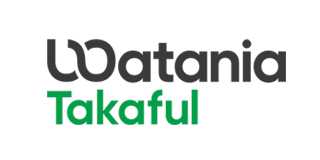Life Insurance Policy in Dubai, UAE
Life insurance isn’t just about preparing for the unexpected, it’s about ensuring your loved ones have financial stability even in your absence. Whether you’re just starting your financial journey or planning for the future, understanding life insurance can be the smartest investment decision you ...read more
What is Life Insurance in UAE?
A life insurance policy provides a financial cushion for the future of your loved ones. It is a contract between you and the insurance company where you pay regular premiums for a selected policy. In return, the insurer agrees to pay a lump sum amount to the beneficiary in the event of the policy owner's premature death.
Choosing the right life insurance policy helps you ensure the financial security of your family. There are different life insurance plans like investment plans, which allow you to fulfill your financial goals, and Term Insurance Plans, which give you economical, comprehensive protection against unexpected events.
If you are new to life insurance, consulting with certified insurance advisers can ensure that you make the right choice.
Buy Best Life Insurance Plan in UAE
Some of the best Term Insurance quotes in UAE & Dubai are:
Some life policies may also offer maturity benefits if the policyholder survives the term.
Life insurance policy in UAE serves as a safety net— it can cover expenses like debts, daily living costs, or future goals like children’s education or long-term savings, thereby ensuring that your loved ones are financially secure. Policies vary, including term plans, whole life, and endowment plans, catering to different needs.




Best Life Insurance UAE in 2025
Tabled below are some of the best life insurance in UAE —
HAYAH Term Life Protect
|
MetLife Live Life Now
|
SUKOON Insurance Life Guard
|
Arabia Term Life
|
Zurich International Term Assurance
|
LIC International Life Protect Term Plan 278
|
SUKOON DigiTerm
|
Arabia Term Life Executive 1
|
Zurich International Term Assurance
|
Key Features and Benefits of a Life Insurance Policy
Before moving on to the top plans, here are the general benefits of a life insurance policy in Dubai, UAE —
- Financial Protection - A life insurance plan provides financial security for your family in your absence. If the life assured passes away during the policy term, your beneficiary receives the sum assured to support their financial needs.
- Wealth Creation through Life Insurance - Certain plans, like savings or Unit-Linked Insurance Plans, allow you to build wealth while also getting life cover. This corpus is paid as a maturity benefit if you outlive the policy term.
- Assured Returns with Savings Plans - Savings and retirement plans offer guaranteed returns at maturity. This amount can be received as a lump sum or regular income, making it an ideal way to grow savings over time.
- Low Premiums for Younger Policyholders - Buying life insurance at a younger age means lower premiums. This is because younger individuals are usually considered low-risk in terms of health risks.
- Long-Term/Lifetime Lifetime Coverage - Certain plans offer coverage up to 100 years, ensuring lifelong protection for you and your family.
Why Is a Life Insurance Policy a Safe Investment?
A life insurance policy can be considered a secure investment option. The policy’s sum assured is unaffected by market ups and downs, ensuring your family’s financial stability. Life insurance is also a transparent product, with clear details on what is and isn’t covered, so you know exactly what protection you have. This clarity makes life plans highly reliable for safeguarding your loved one's financial future.
What are Different Types of Life Insurance in UAE?
How Does Life Insurance Work in UAE?
A life insurance policy in UAE serves a dual purpose. Such a plan not only delivers life coverage for financial support but also facilitates the achievement of various financial goals — children's education, funding a wedding, purchasing property, and securing a steady income post-retirement. While we looked at the example above, here’s a quick explanation of how life cover functions in the UAE —
Premium - This is the amount that you, the policyholder, pay for the financial coverage. This can be paid in one go or on a monthly/annual basis.
Several factors end up affecting life insurance premiums — the insured’s age, income, medical history, high-risk hobbies, lifestyle, and more.
We will discuss these factors further in later sections.
Death Benefit - One of the most important components of life insurance in UAE is the death benefit. This is the predetermined amount the insurance provider pays if the life assured passes away during the policy tenure.
The insured, at the time of policy application, selects the sum assured based on the beneficiary’s future needs. However, remember that several terms and conditions are applicable concerning this sum assured or death benefit — the list includes age, participation in hazardous activities, occupational hazards, lifestyle, and more.
Maturity Benefit - This is a benefit paid to the insured in case they survive the policy tenure. This component is present in most life insurance plans except term insurance plans.
Life Insurance and Wealth Creation
Plans related to life insurance in UAE, like ULIPs and endowment plans also offer an additional component of wealth creation. Under these plans, a portion of your premium is directed towards savings and investment products.
Under ULIPs, a part of the premium goes towards high-risk market-linked commodities. You, as a policyholder, have the power to control the investment portfolio. This way you generate wealth and get returns once you survive the policy tenure. The returns are also subject to partial withdrawals (surrender charges applicable).
In case something happens to you, your nominee/beneficiary gets the death benefit.
Difference Between Term Life Insurance & Whole Life Insurance
Here is a comparison of the primary types of life policies in the UAE — term life insurance and whole life insurance —
|
Feature |
Term Insurance | Whole Life Insurance |
|---|---|---|
| Policy Tenure | For a pre-specified term | The life assured is covered for their entire life |
| Maturity Benefits | None |
Available with all plans |
| Cost | More affordable since only the death benefit component is present | More expensive than term plans due to maturity benefits and coverage for life |
What is the Main Purpose of Life Insurance in UAE?
How to Buy Life Insurance from Policybazaar.ae
With Policybazaar.ae, getting the best life insurance policy is just a matter of a few clicks. Here’s how you can get the best life insurance in UAE in 5 simple steps:

When you buy life insurance online via Policybazaar.ae, you get an additional advantage of 24x7 expert assistance to help you wherever you get stuck. Alternatively, you can visit your selected provider’s nearby office and submit your application in person.
Who Needs Life Insurance Dubai, UAE?
Employed Individuals
Married Couples
Business Owners
Retirees
People with Children
Housewives
Full-time employees can buy affordable life cover to secure financial protection for their beneficiaries if they pass away during the policy term.
Newlyweds can opt for a joint life insurance plan to secure their spouse’s financial future in case one partner dies.
Self-employed individuals can use life plans to ensure that business loans are covered so their loved ones aren’t burdened with debt if they pass away.
Those who buy life insurance during their working years can get a steady income during retirement when the policy matures
Life plans ensure that children’s dreams are fulfilled. These plans provide financial support as a death or maturity benefit.
They can use their husband’s income proof to get a life policy, , securing their family’s financial future in case of their untimely demise.
How Much Life Insurance Cover Do You Need?
As per most experts, your life insurance policy coverage must be at least 10 to 20 times your annual income. By choosing a higher income multiple, you can help your family manage both current financial obligations and future milestones. This also ensures that your family has sufficient funds for the future, even while accounting for inflation.
Generally, to determine the coverage you need, you should factor in the following —
- Family’s lifestyle
- Debts and liabilities
- Children’s education expenses
- Children’s prospects — higher education, marriage, and more
Factors Affecting Life Insurance Policy Premiums
Here is an overview of the factors that affect cost of life insurance in the UAE —
| Factors | Affects |
|---|---|
| Age | Younger individuals generally enjoy a lower life insurance Dubai cost as they are considered less risky in terms of major health issues or mortality. |
| Lifestyle Habits | If you regularly smoke or take tobacco or alcohol, it can lead to higher policy premiums. This is because these habits can increase the risk of health complications, which increases the risk of death. |
| Medical History | If you’ve a history of serious illnesses — heart disease, cancer, and more — it can significantly increase your life plan premiums as they indicate a higher risk profile. |
| Policy Term | Longer policy terms typically result in higher premiums. This is because the coverage is provided for a longer tenure, which increases the chances of payout for the insurer. |
| Sum Assured | The higher the life cover you choose, the higher your premium for life insurance policy UAE. |
Eligibility Criteria to Buy a Life Insurance Policy in UAE
The criteria required for purchasing a life policy can vary among insurance companies. Still, there are common guidelines that are generally applicable as mentioned below -
- The potential policyholder should fall within the age bracket of 18 to 75 years to be eligible for a life cover policy.
- It's necessary for the applicant to demonstrate a stable and reliable stream of income.
- The individual applying for the plan should be a resident of the UAE and possess all the requisite documentation.
Documents to Apply for Life Insurance UAE
To apply for life insurance in Dubai or any other Emirate, you must provide the following details —
- Emirates ID
- Passport or UAE residence visa (for expats)
- Medical details
Note that the documentation requirements can be different for each insurance provider. Check the requirements before applying for Dubai life insurance.
What are the Payout Options for Life Insurance Dubai, UAE?
| Regular Payments | Lump Sum Payment | Combination of Lump Sum and Regular Payments |
|---|---|---|
|
Beneficiaries get a certain portion of the sum assured periodically — either monthly or annually — until the whole sum is exhausted. Such payout for life insurance UAE can provide an income for your family. |
As the name suggests, beneficiaries get all death benefits, including any bonuses, in one go. This option is useful if you’ve taken any large loans. |
Here, the beneficiary of your life insurance policy UAE gets a part of the death benefit and any bonuses as an upfront lump sum. The remaining is given in regular payments (monthly or yearly) for a set duration. With this mode, you can ensure immediate financial support via lump sum, all while also ensuring a steady income over time. |
What are the Additional Add-Ons Available with Life Insurance?
Riders are additional features that can be added to life cover packages to customise coverage as per your specific needs. Some of the common riders of life plans in the UAE include:
Accidental Death Benefit Rider
- A common rider with life insurance cover, it provides additional financial coverage in the event of the insured's accidental death.
- If the insured dies due to an accident during the rider's term, the rider sum assured is paid out to the policyholder's family as a lump sum.
- The benefit is in addition to the sum assured of the base UAE life policy.
Accidental Disability Rider
- This rider of UAE life insurance offers financial support if the policyholder becomes permanently partially or totally disabled due to an accident.
- A percentage of the rider sum assured is paid out for treatment and daily sustenance.
- Payment is determined based on the extent of the disability and the insurer's guidelines.
Critical Illness Rider
- This rider covers a range of critical illnesses to provide financial protection in case the policyholder is diagnosed with one.
- Upon diagnosis, the policyholder and their family receive a lump sum.
- The lump sum from this rider helps one cover their treatment as well as day-to-day expenses.
Waiver of Premium Rider
- This rider waives future premium payments of a life insurance policy in UAE if the policyholder suffers from a critical illness or becomes totally and permanently disabled due to an accident.
- It ensures the continuity of the base life coverage even if premiums are not paid.
- This keeps the policyholder's family financially secure with life cover.
How to File a Life Insurance Policy Claim?
Discussed below is the process to file a claim against a life insurance plan in the event of an unfortunate demise of the life assured in Dubai, UAE —
- Notify the Insurer - Inform your insurance company about the claim as soon as possible.
- Complete the Claim Form - Fill out the form accurately with all the necessary details to avoid processing delays.
- Submit Required Documents - Submit the completed claim form and supporting documents through the designated channels.
- Provide Additional Information - Respond promptly if the insurer requests extra documents or information.
- Claim Assessment - The insurer will evaluate your claim based on submitted details and policy terms. It may also conduct further checks if needed.
- Claim Settlement - Upon approval, the settlement amount will be paid via bank transfer, cheque, or other modes.
- Seek Help if Needed - Contact customer service for assistance if you face challenges during the process.
How to File Claim Life Insurance with Policybazaar.ae’s Assistance?
You can also contact Policybazaar.ae’s claim assistance team to get help in filing a life insurance claim.
With our dedicated claim assistance team for individual claims, the whole process requires minimal paperwork and is accelerated to a great extent. In fact, most claims usually take 7 to 14 business days through us.
Terminologies Related to Life Insurance Policy
| Accidental Death Benefits | A common rider where an additional amount is paid by the insurance company (in addition to the death benefit) if the life assured passes away in an accident |
|---|---|
| Claim Amount | The amount paid by the insurance provider to the insured or the nominee named in the policy |
| Coverage | The financial safety net provided to the policyholder or life assured as per the premium amount you pay and the policy terms |
| Death Benefit | Pre-decided amount paid to the nominee in case the life assured passes away during the policy tenure |
| Exclusions | Circumstances where you don’t get coverage from your insurance plan (provided in the policy’s terms and conditions) |
| Insured | The individual whose life is covered by the life insurance policy |
| Insurance Company | A company that offers life insurance plans in place of premiums |
| Life Assured | The person whose life is insured |
| Maturity Benefit | The amount that the life assured receives upon surviving the policy tenure |
| Nominee | The person who is nominated to receive the amount under the policy if the life assured passes away during the policy period |
| Policyholder | The individual who buys the insurance policy and pays the premium payment — the policyholder can buy the policy for themselves or someone else in the family |
| Policy Term | The time (in years) for which the life insurance policy and coverage is active |
| Premium | The amount that the policyholder pays to the insurance company to keep their life policy active — the payment can be made in a lump sum or on an annual, monthly, half-yearly, or quarterly basis |
| Rider | Optional benefits that you can buy at the time of policy purchase to get additional coverage |
| Sum Assured | Amount paid to the nominee in case the life assured passes away during the policy tenure |
| Surrender Value | The amount payable to the policyholder for surrendering their rights in the policy and terminating the insurance contract |
| Total Permanent Disability | A rider where the life assured receives a sum if they become totally disabled due to an accident or sickness amount |
Benefits of Buying Life Insurance from Policybazaar.ae
When you apply for life insurance UAE through Policybazaar.ae, you get to enjoy many benefits —
- Best Life Insurance in UAE at Affordable Rates: With monthly premiums of just AED 50*, you can get a cover of up to AED 1 million.
- Multiple Options in One Place: Get the top plans for insurance for life from multiple insurance providers in one place.
- Transparency: Get all the key details about life policies — benefits, exclusions, T&Cs, premiums, and more.
- Easy Comparison: Compare the most relevant life insurance quotes in just a few clicks.
- Personalised Assistance: Have any queries or issues? Our expert team is ready to help you throughout the application process for a smooth journey.
- Save Time and Cost: Instead of going out or checking multiple sites, you can search, compare, and buy life insurance UAE from the comfort of your home! Additionally, you can find cost-effective plans that meet your requirements.
- Returns on Investments - Many life protection plans link a part of your premium towards unit-linked assets. This helps you earn high returns while covering your life.
What is the Difference Between Life Insurance and Term Insurance?
Check out the key differences between life insurance and term insurance in the UAE below —
| Parameter | Life Insurance | Term Insurance |
|---|---|---|
| Death Benefits | Yes | Yes |
| Cash Value | Yes — can be fixed or grow over time | No |
| Policy Period | Usually the entire life or up to the age of 100 years | Usually up to 30-40 years |
| Premium | Higher due to investment component | Lower |
| Maturity Benefits | As per the policy | None |
Which Types of Death are Not Covered in Life Insurance Policies?
Although most death types are covered under a life insurance policy, certain exclusions apply —
- Suicide — not covered within an initial period (varies as per the plan)
- Death due to substance abuse
- Demise due to participation in criminal or illegal activities
- Death in UN-sanctioned war zones/countries
What are the Riders for Life Insurance Policies?
Discussed below are some popular riders for life insurance policies in the UAE —
- Critical Illness - This benefit comes into play when the life assured is diagnosed with any of the critical illnesses covered and mentioned in the underwriting.
In this case, a lump sum amount is paid to the life assured. This sum can be used for treatment, compensating for the loss of income during the treatment period, daily expenses, and more. - Accidental Death - In case of accidental death, the life assured’s family is paid an additional amount along with the pre-determined sum assured. However, keep in mind that the policyholder must have bought this rider at the time of policy purchase.
- Waiver of Premium in Case of Disability - If the insured becomes incapable of paying future premiums due to a disability, the premiums will be waived and the policy will remain active.
- Terminal Illness - In case the life assured gets diagnosed with a terminal illness that cannot be cured and can result in death within one year (the time can vary from plan to plan), the company will pay the applicable benefit as per the policy underwriting.
- Second Medical Opinion - Several life insurance policies in the UAE offer a second medical opinion rider. With this benefit, the life assured can get a second medical opinion from renowned healthcare centres, usually for free.
- Permanent and Total Disability - If you buy this rider during policy purchase, the insurance company pays an assured amount (predetermined during the purchasing process) in case you become permanently totally disabled because of an accident or sickness.
Life Insurance Policies - Frequently Asked Questions
Top Life Insurance Providers
Everything You Need to Know About Life Insurance
More From Term Insurance
- Recent Articles
- Popular Articles

































